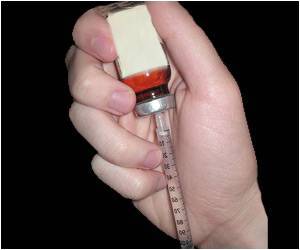Crush injuries suffered in earthquakes, car accidents and explosions as well as muscle damage from excessive exercise or statin drug interactions – can cause life-threatening kidney damag
Crush injuries suffered in earthquakes, car accidents and explosions as well as muscle damage from excessive exercise or statin drug interactions – can cause life-threatening kidney damage.
Treatment has been limited to intravenous fluids and dialysis, but a new study suggests that the commonly used pain reliever acetaminophen may protect the kidneys from damage.An international research team led by investigators at Vanderbilt University Medical Center reports in the Proceedings of the National Academy of Sciences that acetaminophen prevented oxidative damage and kidney failure after muscle injury in a rat model.The findings support further investigation of the drug's effects in patients with severe muscle injuries."This is a novel application of acetaminophen," said the study's lead author, Olivier Boutaud, Ph.D., research associate professor of Pharmacology. The idea "came from two groups working on different things and getting together to create something new," he said.When skeletal muscle is damaged, it breaks down (lyses) – a condition called rhabdomyolysis – and releases its cellular contents, including myoglobin, into the bloodstream. About 10 years ago, L. Jackson Roberts, II, M.D., and colleagues showed in a rat model that the released myoglobin deposits in the kidney and causes kidney failure by inducing oxidative damage to the kidney.About the same time, Boutaud and John Oates, M.D., professor of Medicine and Pharmacology, were investigating the actions of acetaminophen.
They discovered that acetaminophen blocked a "peroxidase" activity in an enzyme called cyclooxygenase.During informal conversations about their studies, members of the two teams realized that the myoglobin in the rat rhabdomyolysis model had a "pseudo-peroxidase" type of activity that was similar to the peroxidase activity blocked by acetaminophen."We said, 'aha, maybe acetaminophen would inhibit the pseudo-peroxidase activity of hemoproteins like myoglobin,'" Roberts said. "And it does."Acetaminophen administered before or after the skeletal muscle injury in the rat model prevented oxidative injury to the kidneys, improved renal function and reduced renal damage. And importantly, the effective acetaminophen concentrations in the rat matched normal therapeutic concentrations in humans.Kevin Moore, M.D., Ph.D., and his colleagues at the University College London Medical School conducted the rat model studies."The rat rhabdomyolysis model is a proof-of-concept of what we showed in vitro and suggests broad applications of acetaminophen," Oates said.The investigators, in collaboration with Robert Mericle, M.D., in the Department of Neurological Surgery, already have a blinded clinical trial under way testing the effects of acetaminophen in patients with subarachnoid hemorrhage. In this condition, red blood cells in the cerebrospinal fluid lyse and release hemoglobin, which has the same potential for causing oxidative damage, Roberts said.Acetaminophen may prevent tissue damage in other conditions that involve blood cell lysis, such as sickle cell disease and malaria, and in heart attacks, where cardiac muscle breakdown releases myoglobin into the circulation.Roberts points out that soldiers at risk of suffering muscle injuries from gunfire or explosive devices may benefit from immediate administration of acetaminophen in the battlefield as well.But first, controlled studies in humans are needed to confirm that acetaminophen prevents kidney damage and that it's safe.
Source-Eurekalert
RAS









